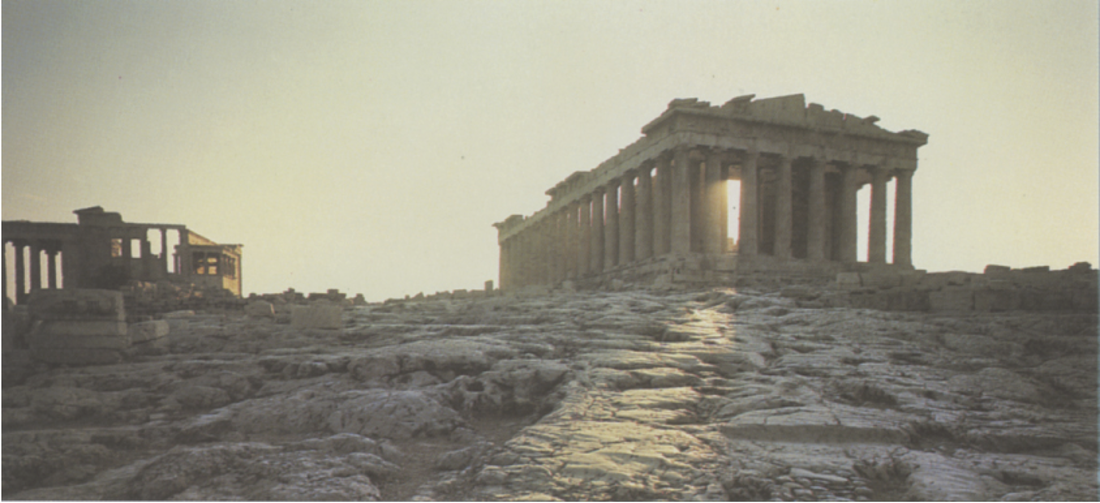Athenian Democracy
Be prepared to talk about the Athenian democracy, its parts and how they worked, and to be able to cross compare its characteristics, strengths, and weaknesses with the US representative democracy. Fundamental to the knowledge-set is the slide and handout on democracy (in our BOX folder) and the reading from Pomeroy (see assignments). Expect prompts like "who qualified as a citizen?," "how the Boule (Council)/Ekklesia (Assembly) function?" "how did the court system work?" "how did ostracism work?" Also, you are expected to be able to write about Pericles: who he was, why he was important, and why we look back to his Funeral Oration (see assignments) as depicted in Thucydides. Expect prompts like "why do we speak of Periclean Athens?" "what are the central themes of the Funeral Oration?" or to comment on a passage quoted from that speech or from Plutarch's Life of Pericles. Recall for the Funeral Oration the special contrastive position of Sparta, and be ready to describe the central aspects of Spartan society (see slides in BOX).
The readings from Thucydides also are important as examples of the workings of the radical Democracy. Be prepared to tell the story for the Plague, the Revolt of Mytilene, the Civil War at Corcyra, the Melian Dialogue, and to comment on what these episodes say about the problematics of democracy in antiquity, as it is depicted in Thucydides. For the Plague, its position in the narrative (directly after the Funeral Oration and the "obituary" of Pericles) is essential. Expect prompts like "tell the story and explain the significance for the idea of democracy in Thucydides for the Civil War at Corcyra episode."
For the section of this module on art and architecture, the visual materials in the slides BOX folder are essential, as well as the narrative from the Pollitt reading. Be prepared not only to explain central ideas like “commensurability of parts” or “Olympian gaze” or the “deliberate curvature” of the Parthenon but also why these phrases are central to the narrative of the “Golden Age” of Pericles and the building program that included the Parthenon. The prompts for this section may well be images rather than terms or phrases.
Key terms:
Tribute Lists
Athenian Property Classes
Athenian Tribes
Boule (Council)
Ekklesia (Assembly)
Dikasteria (Courts)
Ostracism
First Citizen of Athens
Funeral Oration
Plague
Revolt of Mytilene
Civil War at Corcyra
Melian Dialogue
Ionic versus Doric Order and relevance to Parthenon
Commensurability of Parts
Olympian Gaze
Deliberate Curvature (Entasis) of Parthenon
Metope
Battle of Centaurs and Lapiths (south side of Parthenon metope theme)
Frieze
Pediment
Be prepared to talk about the Athenian democracy, its parts and how they worked, and to be able to cross compare its characteristics, strengths, and weaknesses with the US representative democracy. Fundamental to the knowledge-set is the slide and handout on democracy (in our BOX folder) and the reading from Pomeroy (see assignments). Expect prompts like "who qualified as a citizen?," "how the Boule (Council)/Ekklesia (Assembly) function?" "how did the court system work?" "how did ostracism work?" Also, you are expected to be able to write about Pericles: who he was, why he was important, and why we look back to his Funeral Oration (see assignments) as depicted in Thucydides. Expect prompts like "why do we speak of Periclean Athens?" "what are the central themes of the Funeral Oration?" or to comment on a passage quoted from that speech or from Plutarch's Life of Pericles. Recall for the Funeral Oration the special contrastive position of Sparta, and be ready to describe the central aspects of Spartan society (see slides in BOX).
The readings from Thucydides also are important as examples of the workings of the radical Democracy. Be prepared to tell the story for the Plague, the Revolt of Mytilene, the Civil War at Corcyra, the Melian Dialogue, and to comment on what these episodes say about the problematics of democracy in antiquity, as it is depicted in Thucydides. For the Plague, its position in the narrative (directly after the Funeral Oration and the "obituary" of Pericles) is essential. Expect prompts like "tell the story and explain the significance for the idea of democracy in Thucydides for the Civil War at Corcyra episode."
For the section of this module on art and architecture, the visual materials in the slides BOX folder are essential, as well as the narrative from the Pollitt reading. Be prepared not only to explain central ideas like “commensurability of parts” or “Olympian gaze” or the “deliberate curvature” of the Parthenon but also why these phrases are central to the narrative of the “Golden Age” of Pericles and the building program that included the Parthenon. The prompts for this section may well be images rather than terms or phrases.
Key terms:
Tribute Lists
Athenian Property Classes
Athenian Tribes
Boule (Council)
Ekklesia (Assembly)
Dikasteria (Courts)
Ostracism
First Citizen of Athens
Funeral Oration
Plague
Revolt of Mytilene
Civil War at Corcyra
Melian Dialogue
Ionic versus Doric Order and relevance to Parthenon
Commensurability of Parts
Olympian Gaze
Deliberate Curvature (Entasis) of Parthenon
Metope
Battle of Centaurs and Lapiths (south side of Parthenon metope theme)
Frieze
Pediment

